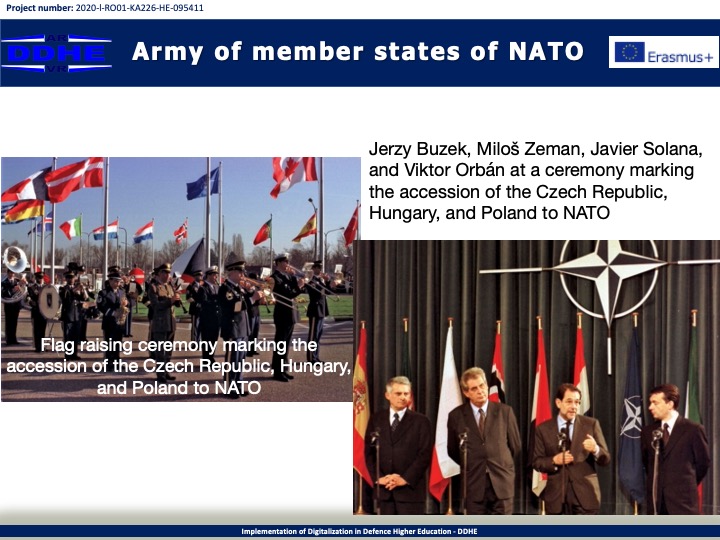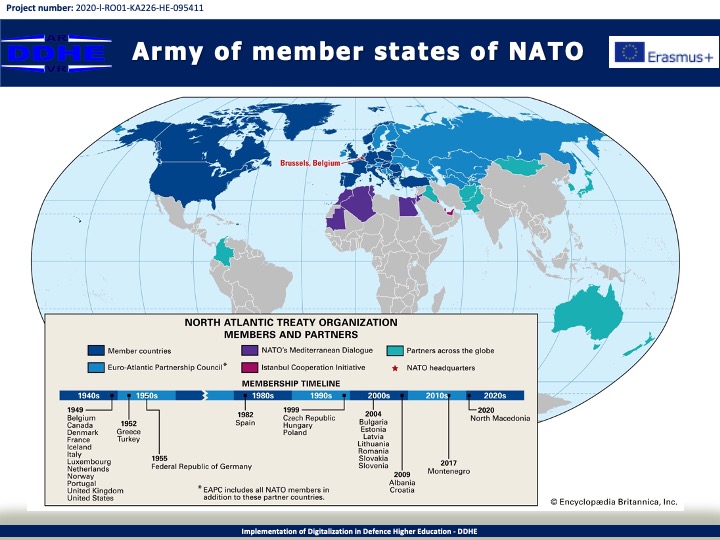After the Cold War, NATO was reconceived as a “cooperative-security” organization whose mandate was to include two main objectives: to foster dialogue and cooperation with former adversaries in the Warsaw Pact and to “manage” conflicts in areas on the European periphery, such as the Balkans. In keeping with the first objective, NATO established the North Atlantic Cooperation Council (1991; later replaced by the Euro-Atlantic Partnership Council) to provide a forum for the exchange of views on political and security issues, as well as the Partnership for Peace (PfP) program (1994) to enhance European security and stability through joint military training exercises with NATO and non-NATO states, including the former Soviet republics and allies. Special cooperative links were also set up with two PfP countries: Russia and Ukraine.
The second objective entailed NATO’s first use of military force, when it entered the war in Bosnia and Herzegovina in 1995 by staging air strikes against Bosnian Serb positions around the capital city of Sarajevo. The subsequent Dayton Accords, which were initialed by representatives of Bosnia and Herzegovina, the Republic of Croatia, and the Federal Republic of Yugoslavia, committed each state to respecting the others’ sovereignty and to settling disputes peacefully; it also laid the groundwork for stationing NATO peacekeeping troops in the region. A 60,000-strong Implementation Force (IFOR) was initially deployed, though a smaller contingent remained in Bosnia under a different name, the Stabilization Force (SFOR). In March 1999 NATO launched massive air strikes against Serbia in an attempt to force the Yugoslav government of Slobodan Milošević to accede to diplomatic provisions designed to protect the predominantly Muslim Albanian population in the province of Kosovo. Under the terms of a negotiated settlement to the fighting, NATO deployed a peacekeeping force called the Kosovo Force (KFOR).
The crisis over Kosovo and the ensuing war gave renewed impetus to efforts by the European Union (EU) to construct a new crisis-intervention force, which would make the EU less dependent on NATO and U.S. military resources for conflict management. These efforts prompted significant debates about whether enhancing the EU’s defensive capabilities would strengthen or weaken NATO. Simultaneously there was much discussion of the future of NATO in the post-Cold War era. Some observers argued that the alliance should be dissolved, noting that it was created to confront an enemy that no longer existed; others called for a broad expansion of NATO membership to include Russia. Most suggested alternative roles, including peacekeeping. By the start of the second decade of the 21st century, it appeared likely that the EU would not develop capabilities competitive with those of NATO or even seek to do so; as a result, earlier worries associated with the spectre of rivalry between the two Brussels-based organizations dissipated.

